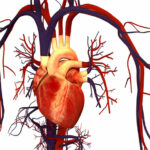Food for Thought
Choose tricklers not gushers
Because there have been inconsistent findings from observational studies, the controversy over the effects of GI and the risk of lifestyle diseases has had that ‘how long is a piece of string quality’ about it.
The first meta-analysis to evaluate the association between the GI of the diet, and the risk of developing common lifestyle-related diseases, was published in the American Journal of Clinical Nutrition in March and provides additional evidence that diets with a high GI or a high GL will increase your risk of type 2 diabetes and heart disease. It also shows there is evidence for links between high blood glucose and gallstones and even some types of cancer. ‘The key message,’ says lead author Alan Barclay, ‘is that the GI of your diet is a predictor of your disease risk. Grandma was right, you are what you eat.’
![[GLYCEMIC INDEX]](https://glycemicindex.com/blog/2008/april08/glycemic250.jpg)
Low GI foods (the ones that trickle glucose into your bloodstream) have benefits for everybody. Not only can they keep you feeling full longer, they help you achieve and maintain a healthy weight and provide you and your brain with more consistent energy throughout the day. They can also have a major effect on the way the body functions and whether or not you develop health problems. Alan Barclay explains why: ‘If you have constantly high blood glucose levels from eating a high GI diet, you may literally “wear out” your pancreas over time and eventually this can lead to pre-diabetes and type 2 diabetes.’
‘There’s also evidence from the studies that have been done that high blood glucose levels are linked to certain types of cancer, as well. This is because constant spikes in blood glucose from eating high GI gushers cause the body to release more insulin, and also increase a related substance called insulin like growth factor one (IGF-1). Both these hormones increase cell growth and decrease cell death, and have been shown to increase the risk of developing some types of cancer.’
‘Other research shows that a high GI diet tends to reduce “good” HDL cholesterol levels and raise triglycerides levels; bad news for cardiovascular diseases. And people with low HDL cholesterol and high triglyceride levels are more prone to gallstones.’
‘What it comes down to is that there’s a simple, cost-effective way for everybody to reduce their risk of developing diabetes and heart disease and enhance their quality of life. We all need to eat a healthy, low GI diet. I guess that simply means when it comes to carb-rich foods, choose the tricklers and reduce the overall GI of your diet.’
10 tips for reducing the GI of your diet
- Aim to eat at least two serves of fruit and five serves of vegetables every day, preferably of three or more different colours. Tidbit: Fill half your dinner plate with veggies.
- If you are a big potato eater, either have one or two Nicola, Almera or tiny chat potatoes. Tidbit: Make ‘mash’ replacing half the potato with cannellini beans.
- Choose a low GI bread. Look for the GI Symbol or choose a really grainy bread, true sourdough bread or a soy and linseed bread.
- Replace high GI breakfast flakes (real glucose gushers) with low GI alternatives like natural muesli, traditional porridge oats or one of the lower GI processed breakfast cereals.
- Look for lower GI rices such as basmati, Doongara Clever Rice or Moolgiri medium grain rice and choose less processed foods or low GI wholegrains such as traditional rolled or steel-cut oats, or quinoa for porridge or pearl barley, buckwheat, bulgur, whole kernel rye, or whole wheat kernels.
- Eat legumes (beans, chickpeas and lentils) often – home cooked or canned.
- Include at least one low GI carb with every meal. You’ll find them in four of the food groups: fruit and vegetables; bread and cereals; legumes; low fat dairy or soy alternatives.
- Choose low GI snacks – fresh fruit, a dried fruit and nut mix, low fat milk or yoghurt.
- Vinegar and lemon or lime juices slow stomach emptying and lower your blood glucose response to the carbohydrate with which they are eaten. Tidbit: Get the salad habit and toss it in a vinaigrette dressing.
- Limit refined flour products – cookies, cakes, pastries, pies, crumpets, crackers, biscuits irrespective of their fat and sugar content.
![[KIDS]](https://glycemicindex.com/blog/2008/april08/apples250.jpg)
Two extra tips to reduce blood glucose spikes
- Incorporate a lean protein source with every meal – lean meat, skinless chicken, eggs, fish or seafood, or low fat dairy, legumes or tofu if you are vegetarian.
- Remember portion caution with carb-rich foods such as pasta, noodles and low GI rices. It’s all too easy to over-eat them. While they may be low GI choices themselves, eating lots of them will have a marked effect on your blood glucose.







